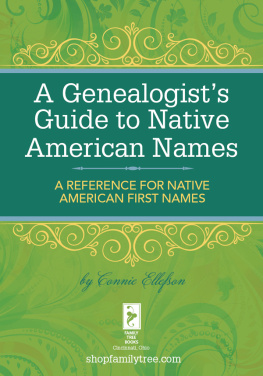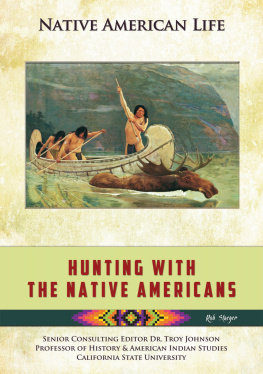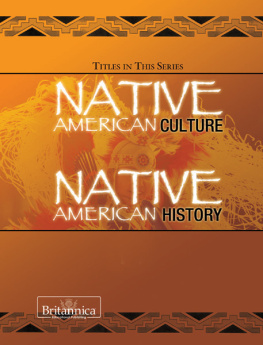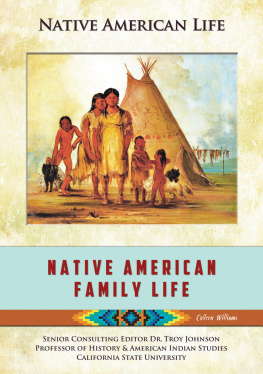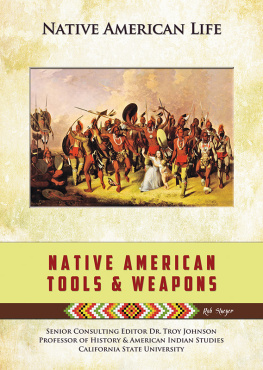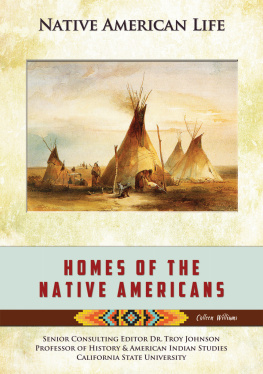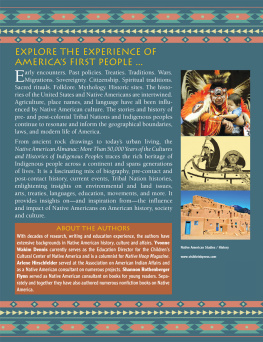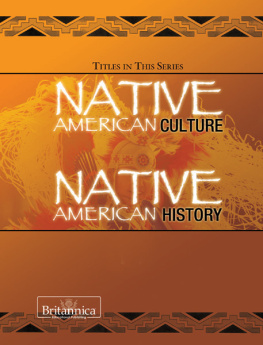NATIVE AMERICAN SPORTS AND GAMES
Rob Staeger

NATIVE AMERICAN LIFE
E UROPEANS AND N ATIVE A MERICANS
H OMES OF THE N ATIVE A MERICANS
H UNTING WITH THE N ATIVE A MERICANS
N ATIVE A MERICAN C ONFEDERACIES
N ATIVE A MERICAN C OOKING
N ATIVE A MERICAN F AMILY L IFE
N ATIVE A MERICAN F ESTIVALS AND C EREMONIES
N ATIVE A MERICAN H ORSEMANSHIP
N ATIVE A MERICAN L ANGUAGES
N ATIVE A MERICAN M EDICINE
N ATIVE A MERICAN R ELIGIONS
N ATIVE A MERICAN R IVALRIES
N ATIVE A MERICAN S PORTS AND G AMES
N ATIVE A MERICAN T OOLS AND W EAPONS
W HAT THE N ATIVE A MERICANS W ORE
NATIVE AMERICAN SPORTS AND GAMES
Rob staeger

Archery, an important skill for hunting and warfare among Native Americans, was also a popular sport.
SENIOR CONSULTING EDITOR DR. TROY JOHNSON
PROFESSOR OF HISTORY AND AMERICAN INDIAN STUDIES
CALIFORNIA STATE UNIVERSITY

This book is dedicated to the athletes in my familymy brothers, Ed, Tom, and Jim.
 | Mason Crest
450 Parkway Drive, Suite D
Broomall, PA 19008
www.masoncrest.com |
2014 by Mason Crest, an imprint of National Highlights, Inc.
All rights reserved. No part of this publication may be reproduced or transmitted in any form or by any means, electronic or mechanical, including photocopying, recording, taping, or any information storage and retrieval system, without permission from the publisher.
Printed and bound in the United States of America.
CPSIA Compliance Information: Batch #NAR2013. For further information, contact Mason Crest at 1-866-MCP-Book
First printing
1 3 5 7 9 8 6 4 2
Library of Congress Cataloging-in-Publication Data
Staeger, Rob.
Native American sports and games / Rob Staeger.
pages cm. (Native American life)
Includes bibliographical references and index.
ISBN 978-1-4222-2976-7 (hc)
ISBN 978-1-4222-8863-4 (ebook)
1. Indians of North AmericaSportsJuvenile literature. 2. Indians of North AmericaGamesJuvenile literature. I. Title.
E98.G2S73 2013
973.0497dc23
2013007317
Native American Life series ISBN: 978-1-4222-2963-7
TABLE OF CONTENTS
For hundreds of years the dominant image of the Native American has been that of a stoic warrior, often wearing a full-length eagle feather headdress, riding a horse in pursuit of the buffalo, or perhaps surrounding some unfortunate wagon train filled with innocent west-bound American settlers. Unfortunately there has been little written or made available to the general public to dispel this erroneous generalization. This misrepresentation has resulted in an image of native people that has been translated into books, movies, and television programs that have done little to look deeply into the native worldview, cosmology, and daily life. Not until the 1990 movie Dances with Wolves were native people portrayed as having a human persona. For the first time, native people could express humor, sorrow, love, hate, peace, and warfare. For the first time native people could express themselves in words other than ugh or Yes, Kemo Sabe. This series has been written to provide a more accurate and encompassing journey into the world of the Native Americans.
When studying the native world of the Americas, it is extremely important to understand that there are few universals that apply across tribal boundaries. With over 500 nations and 300 language groups the worlds of the Native Americans were diverse. The traditions of one group may or may not have been shared by neighboring groups. Sports, games, dance, subsistence patterns, clothing, and religion differedgreatly in some instances. And although nearly all native groups observed festivals and ceremonies necessary to insure the renewal of their worlds, these too varied greatly.
Of equal importance to the breaking down of old myopic and stereotypic images is that the authors in this series credit Native Americans with a sense of agency. Contrary to the views held by the Europeans who came to North and South America and established the United States, Canada, Mexico, and other nations, some Native American tribes had sophisticated political and governing structuresthat of the member nations of the Iroquois League, for example. Europeans at first denied that native people had religions but rather worshiped the devil, and demanded that Native Americans abandon their religions for the Christian worldview. The readers of this series will learn that native people had well-established religions, led by both men and women, long before the European invasion began in the 16th and 17th centuries.
Gender roles also come under scrutiny in this series. European settlers in the northeastern area of the present-day United States found it appalling that native women were treated as drudges and forced to do the mens work in the agricultural fields. They failed to understand, as the reader will see, that among this group the women owned the fields and scheduled the harvests. Europeans also failed to understand that Iroquois men were diplomats and controlled over one million square miles of fur-trapping area. While Iroquois men sat at the governing council, Iroquois clan matrons caucused with tribal members and told the men how to vote.
These are small examples of the material contained in this important series. The reader is encouraged to use the extended bibliographies provided with each book to expand his or her area of specific interest.
Dr. Troy Johnson
Professor of History and American Indian Studies
California State University

Native Americans played a variety of sports and games, as this illustration depicting a Florida tribe shows.
Two Penobscot Indian men gripped ropes, walking through the cold Maine countryside. The ropes were tied to a large log. They dragged the log through the snow behind them. Between their footprints, a wide path of flattened snow glistened in the sun. The men pulled the log down a steep hill and up and down a smaller one. They crossed a frozen lake, went a few yards farther, and stopped.
Back at the lodge, their sons were carving long branches. When the branches were smooth, they would be decorated to look like snakes. The snakes, thrown from the top of the hill, would slide down the track the men had just made. The air was crisp and cloudless. It was a good day to play snow snake.
Farther south, a Mandan warrior pulled back his bowstring. He pointed his arrow high into the air and let it fly. Like lightning, he grabbed another arrow and fired it. He followed that with another, and then another. His original arrow was still in the air when he fired a fifth and a sixth. He had just released his seventh arrow when his first arrow fell to the ground. He hoped seven would be enough to win the contest. Looking over at his competition, he wasnt sure.
a bundle of cornstalks with some feathers sticking out of it. Before it touched the ground, the man hit it into the air again. A friend watched him, counting the number of times he hit it. After he reached 83, the shuttlecock hit the ground. The second man picked it up and began bouncing it off his left hand. The first player started counting. There were two blankets on the ground nearby. The first man to reach 100 hits would win them both.
Next page

